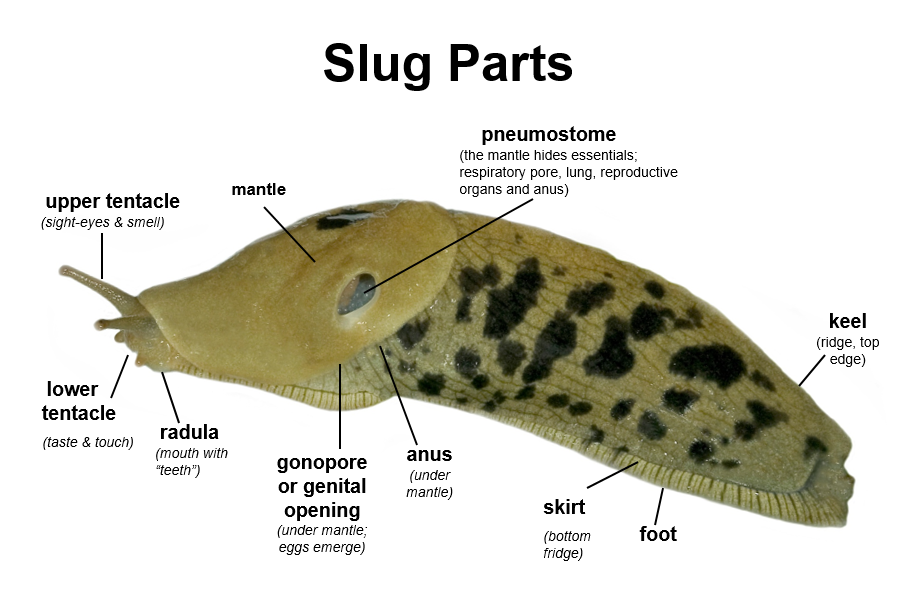
photo by Jeffrey C. Miller, OSU Emeritus; Diagram created by Amy J. Dreves, OSU Research and Extension Entomologist
The phylum Mollusca (kingdom Animalia): Mollusca, comes from the latin root for “soft”, a group of animals including slugs, snails, squids, scallops, octopuses, oysters, and clams, that all have soft bodies which typically have a foot, head, and mass. The study of Mollusca is called malacology. Slugs are very efficient in the use of their body parts. The mantle encloses and protects the slugs internal organs, pumps water and filters out food, and stores eggs while they mature.
- The body is primarily made up of water to avoid desiccation. They have a mantle cavity which protects internal organs such as a lung (pneumostome)
- The upper tentacle contains two retractable tentacles used for light detection (light sensing with eye spots at the tips) and for detecting odors
- The lower tentacle function is to taste and touch
- The slug’s mouth, called a radula, has a species-specific arrangement of “special teeth” used for grinding up their food
- The pneumostome is a breathing pore or respiratory opening found on the side of the slug
- The mantle covers the essentials (genital, anus, and lungs) behind the head
- The head consists of the radula and the tentacles
- The gonopore is an opening under the mantle through which eggs and sperm are released
- The anus is found under mantle
- The skirt, right above the foot can , aid in locomotion
- The foot is the base or bottom side of the skirt and rhythmic waves of muscular contraction in the foot with mucus (slime) enables the slug to move
- The keel is a ridge running over the back of the slug along the middle of the tail
- The tail is the part of the slug that trails behind the mantle
- The slime produced by a slug varies by color and stickiness; and helps slugs travel and protects the foot from damage
